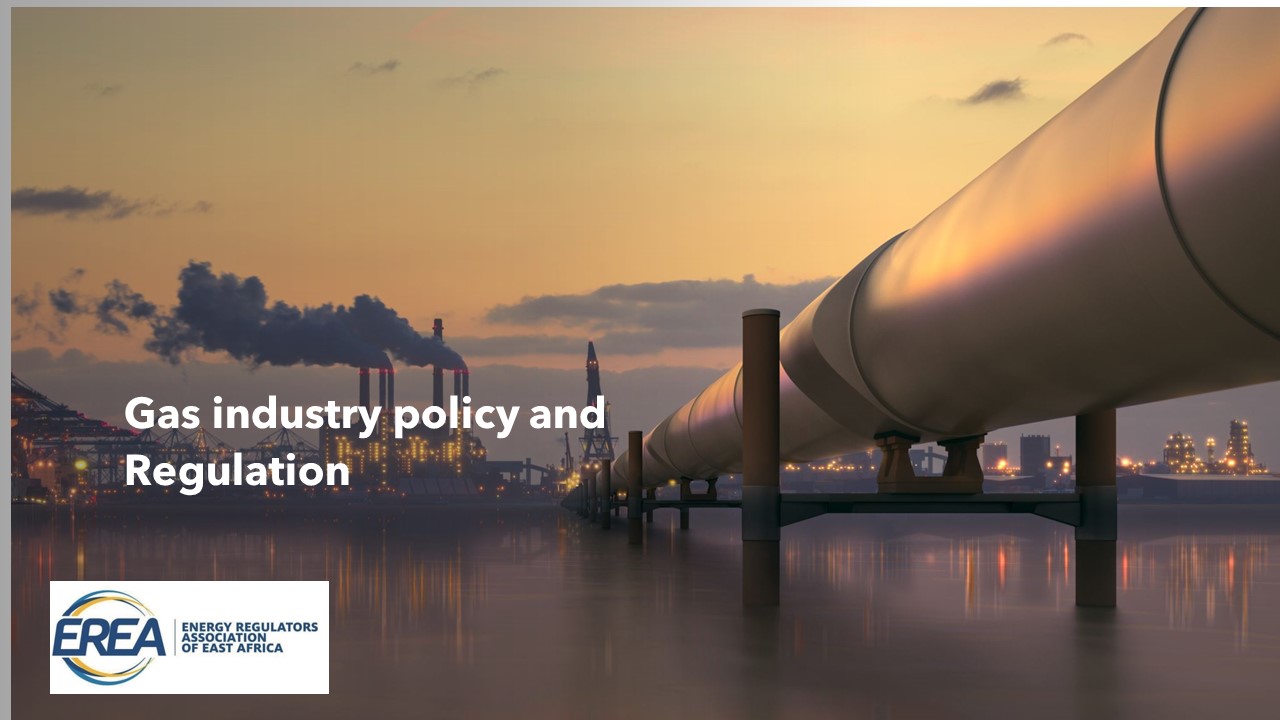Gas industry Polices and Regulation - PowerPoint PPT Presentation
Title:
Gas industry Polices and Regulation
Description:
Gas industry Polices and Regulation – PowerPoint PPT presentation
Number of Views:4
Slides: 23
Provided by:
Username withheld or not provided
Category:
How To, Education & Training
Tags:
Title: Gas industry Polices and Regulation
1
Gas industry policy and Regulation
2
Policy and regulation
3
Gas Policy
- Gas policy can be evaluated according to goals
and criteria. The achievement of each goal is
assessed according to the dynamics of the gas
market. In fashioning a policy framework for the
Gas Industry, it is vital to avoid several
mistakes that will lead to a condition where the
market is constrained by either supply or demand. - Lack of development results in markets that are
supply constrained. This occurs when either gas
prices or after-tax profits do not justify
investment in exploration. In a supply
constrained market, prices do not reflect the
actual cost of gas production. Low market prices
or price subsidies reduce the incentive for
investment, discourage conservation and encourage
inefficient production practices. - Demand constrained markets are primarily the
product of price shocks where gas costs exceed
those of alternative fuels. In this situation,
competing fuels capture the market. Fuel
switching depresses gas development. As a result,
TOP balances increase as Buyers are unable to
utilize gas economically. Under-utilized
infrastructure results in excess capacity. If the
government has provided credit support for gas
purchasers, there is a burden on the treasury.
4
Policy goals
5
Policy goals ctn
6
Regulation
- Policy is implemented through regulatory
instruments that include guidelines, licenses,
rules, codes of conduct and contracts. The extent
to which the government determines that
regulations are needed to establish the chosen
policy framework for the Gas Industry depends
upon the authority delegated from the central
government (executive or legislative) to the
executing agency. The regulatory framework ranges
from interventionist to light-handedness - State ownership and prescriptive regulations
exemplify interventionist policies. A
light-handed approach is implemented through
performance standards, self- regulation or
reliance on market forces.
7
Function of Regulation
8
Upstream policy and regulation
- For hydrocarbon endowed nations, upstream policy
and regulations are focused on resource
development. Depending on the state of both the
resource and the nations social, economic, and
political orientation. - A nations policy informs the nature of upstream
industry structure and fiscal regimes.
Governments have selected one of two types of
licensing system which are concessionary or
contractual systems. - The principle of the concessionary license system
is that the state transfers its ownership of
resources in the subsurface to a commercial
entity. The entity obtains exclusive rights to
extract crude oil and natural gas in a defined
area for a limited time.
9
Upstream policy and regulation
- Under contractual systems, the state retains its
ownership of hydrocarbon resources. A commercial
entity, the contractor company, is being engaged
to extract petroleum according to some contract.
The countries using this type of system often
have their state-owned oil company to represent
the interests of the state. - Most used variants of contract
- Production sharing contracts
- Service contracts
- Buyback contracts
- Technical assistance contracts
10
Upstream policy and regulation
11
Midstream and Downstream
12
Midstream and Downstream regulation tools
13
Midstream and Downstream regulation tools
14
Policy and regulation in project participation
- Participation in commercial enterprises is a
well-established means of government intervention
in the Gas Industry. There are different forms of
participation depending upon the segment of the
Gas Industry that is under consideration.
15
Upstream government participation
16
Mid Downstream government participation
17
Participation through financing and credit support
18
Participation through financing and credit support
19
Taxation
20
Competition
21
Policies on intergovernmental relations
22
Group discussion
- Local content
- Influence of global policies































